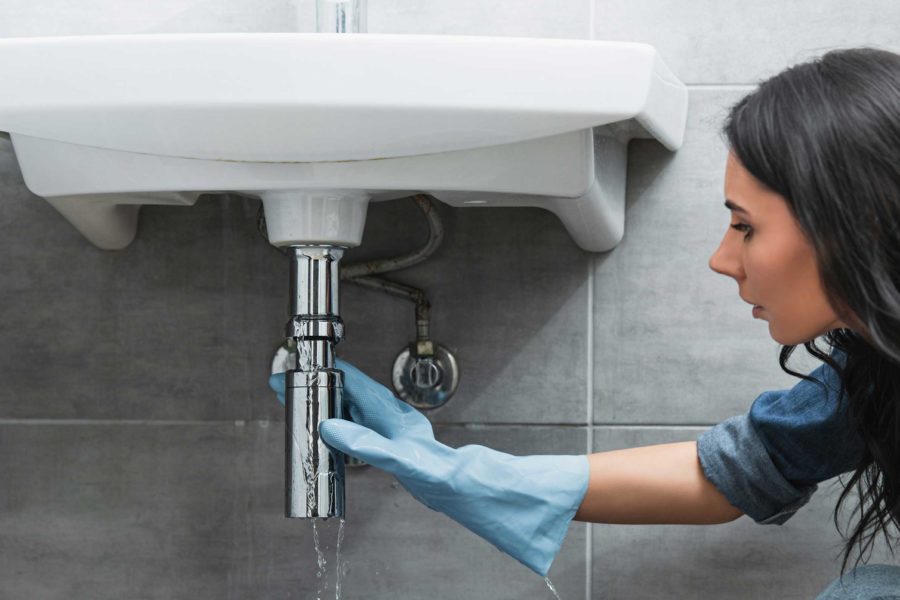Did you know that the average American’s carbon footprint is 20 tons of CO2-eq per year? That’s roughly 16 tons higher than the global average.
This means that 11 percent of the world’s population (or 800 million people) are vulnerable to climate change events such as droughts, floods, heat waves and other extreme weather phenomena that are caused by global warming.
Knowing these statistics, it’s incredibly important that we all do what we can to reduce our carbon emissions as much as possible in order to leave a viable earth for our children and grandchildren.
So, let’s get personal. What can the average U.S. homeowner do to reduce their carbon footprint and make their property more environmentally friendly?
We offer 10 easy home improvement tips — some you may already be doing — to make your living space more environmentally friendly, help you reduce your home’s CO2 emissions, and ultimately, make your wallet happier.
Tip 1: Choose LED or Natural Lighting
Did you know that light-emitting diodes (LEDs) use 75 percent less energy and last 25 percent longer than traditional light bulbs according to the U.S. Department of Energy? By simply switching your old light bulbs to LED lighting, not only will you be helping save the environment, but you’ll also be drastically reducing your monthly energy bills.
Whenever possible, use natural lighting, as well. Turning off your lights for just one hour a day can save 1.22 pounds of CO2. If every household in the U.S. did this, the overall impact would be significant.
Tip 2: Fix Leaks
You may wonder how fixing a leaky pipe can help the environment, but you’d be surprised to learn how much water is wasted when plumbing problems are ignored. Something as simple as a leaky faucet can waste up to 10,000 gallons of water every year.
When you consider that 783 million people do not have access to clean water, it is crucial to be conservative with water use whenever possible.
Although simple plumbing issues can often be resolved by you, or the property owner, it’s wise to bring in a professional plumbing service if the leak looks to be more serious.
To try and avoid any serious plumbing calamities before they can begin, you may want to look into having your plumbing inspected annually.
Tip 3: Recycle, Recycle, Recycle
Take advantage of whatever recycling program your city has to offer.
This is one of the easiest ways to reduce the overall waste your household produces. Recycling not only ensures that no new plastic is made, but it also reduces the amount of space that is allocated to decomposing garbage.
U.S. landfills produced 12.1 million tons of CO2 emissions in 2010, and were also responsible for producing 16.2 percent of methane emissions across the nation.
Tip 4: Upcycle
Recycling is a great start, but upcycling items in your home is an even better way to help reduce waste in landfills.
Simple things like reusing old glass pasta sauce jars as storage containers or reusing them as a child’s piggy bank. If possible, repaint an old piece of furniture, or reupholster an armchair instead of throwing it away and buying a new one.
Make it your goal to get the most use out of an item as possible. Or, you can try researching social media sites like Pinterest to get inspiration on how to upcycle everyday items.
Tip 5: Buy House Plants
Even if you don’t naturally have a green thumb, decorating your home with some house plants can ultimately be worth your time.
Scientists have found that the soil in potted plants can help clean the air of harmful substances such as benzene.
Plants like the Boston fern and the golden pothos are especially good for air cleansing, and can help reduce the overall CO2 emissions of your home.
Tip 6: Food Shop Smart & Grow Your Own
Anytime you drive to the grocery store you are contributing to the increase in carbon emissions. So, instead of making multiple trips to the store every week for groceries, try to limit shopping trips to once a week or once every other week.
You can also join a CSA or create a vegetable patch in your backyard — if the season allows — so that you are less dependent on the local supermarket. Even if you don’t have a massive backyard, many veggies and herbs are quite happy to grow in potted spaces on a balcony or, even, indoors!
A private gardener also produces fewer carbon emissions than a traditional farmer, so everyone wins when you put this tip into practice.
Tip 7: Run Your Dishwasher or Laundry Machine Sparingly
Running a half-full dishwasher or laundry machine is a huge waste of energy. Did you know that a single cycle produces 7.27 pounds of CO2 emissions?
Tip 8: Dry By Hand
Even though doing the dishes in the dishwasher can save water, drying them in the same machine is a major energy waster.
Drying your dishes by hand can cut your dishwasher’s energy consumption in half; so why not take a few extra minutes to dry your dishes and, perhaps, meditate at the same time?
Likewise, line drying (or air drying) your laundry is a little change you can make that will have a positive impact on the environment.
Tip 9: Solar Energy
In 2019, it’s not uncommon for households to have multiple different types of electronic devices. From laptops to iPads, these devices require a steady stream of energy to keep them running.
Instead of using a home’s electricity to charge your cell phone, you can invest in a solar powered battery charger.
Not only will this eliminate any of the carbon emissions you would have produced by using a home’s electricity, but these batteries are also portable. That means you can use them even if you’re camping or traveling abroad.
Tip 10: Programmable Thermostat
Installing a programmable thermostat may be an upfront expense, but it can slash your heating bill by up to 15 percent a year once you install one of these handy devices.
A simple reduction of two degrees can save around 2,000 pounds of CO2 a year. By using a programmable thermostat to make these minor changes to your heating system automatically, it’s one less thing that you have to worry about — and it’s good for the earth.



 5 min read
5 min read



